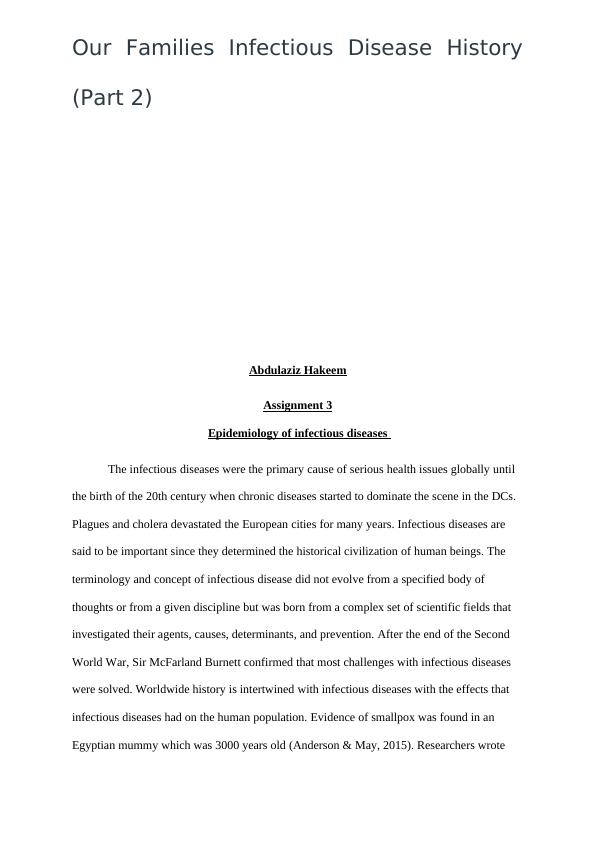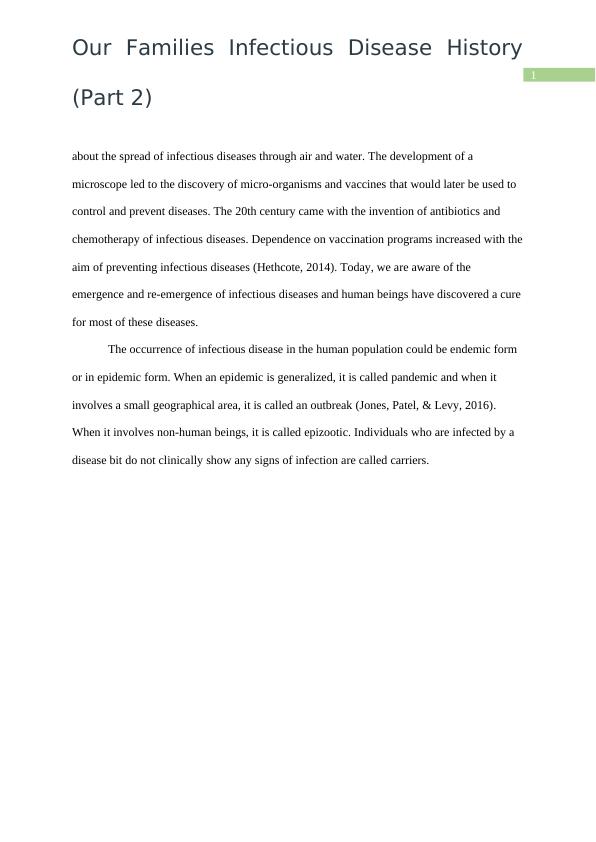Our Families Infectious Disease History (Part 2)
Answering questions about the conclusions drawn from the class list of infectious diseases, the occurrence of diseases at certain times, and speculating how the list would look like in a less developed part of the world.
4 Pages615 Words471 Views
Added on 2023-04-04
About This Document
This article discusses the epidemiology of infectious diseases and their impact on human civilization. It explores the occurrence of diseases in different populations and the role of seasonal changes. It also highlights the dominant infectious diseases in less developed countries.
Our Families Infectious Disease History (Part 2)
Answering questions about the conclusions drawn from the class list of infectious diseases, the occurrence of diseases at certain times, and speculating how the list would look like in a less developed part of the world.
Added on 2023-04-04
ShareRelated Documents
End of preview
Want to access all the pages? Upload your documents or become a member.
Comparison of Cholera and Influenza: An Essay on Disease and Infection Control
|7
|1793
|229
Study of Different Diseases: Vaccines, Durability, Side Effects, and More
|7
|1581
|99
Study of Different Diseases: Vaccines, Side Effects, and Treatment
|8
|1821
|66
Sociology Of Vaccinations Report
|4
|637
|20
Health Law and Ethics Assignment 2022
|14
|4034
|17
Report on Malaria and Change in Climate
|5
|938
|115


